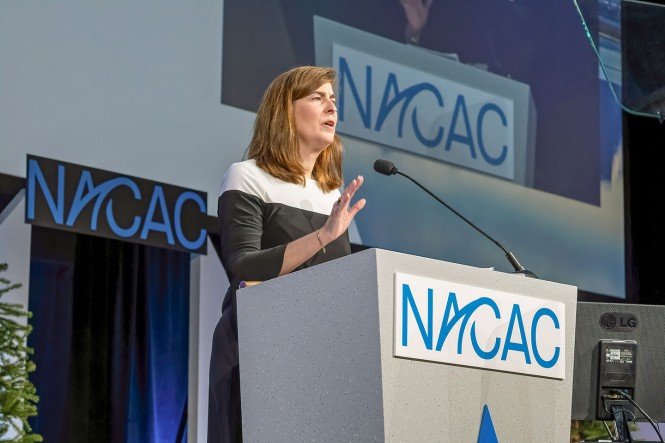Stefanie Niles, vice president for enrollment and communications at Ohio Wesleyan University, has assumed the presidency of the National Association for College Admission Counseling (NACAC) Saturday at the association’s 74th National Conference in Salt Lake City.
Concerns about college access, the welfare of undocumented students, rising college costs, and other pressing issues initially spurred Niles to run for board service last year. She is in the second year of a three-year presidential cycle.[widgets_on_pages id=1]
In her first speech as NACAC’s top elected leader, Niles pledged to keep those priorities top-of-mind in the coming year.
“Over this next year, while there is work to be done to ensure that the association can function most effectively, it is also critical that we get ‘back to the basics’ and refocus our energies on the significant issues impacting our students,” Niles told attendees at NACAC’s Annual Membership Meeting.
Niles has worked in the admission profession for over two decades. She previously served on NACAC’s Current Trends and Future Issues Committee as well as the National College Fairs Committee and Affiliate Presidents Council. Throughout her career, Niles has been active in various state and regional NACAC affiliates, most recently serving as a faculty member for the Pennsylvania’s Association for College Admission Counseling’s Enrollment Management Institute in 2016 and 2018.
Through that involvement, as well as her experiences on the board, Niles said she’s witnessed the value of collaborative leadership.
“I anticipate that there will be much work to do this year and I am ready to do that work—continuing to provide you with tools and resources necessary to serve students and their families in their college search process…” she told association members. “We are better together than we are on our own.”
About NACAC
The National Association for College Admission Counseling (NACAC), founded in 1937, is an organization of nearly 16,000 professionals from around the world dedicated to serving students as they make choices about pursuing postsecondary education.








